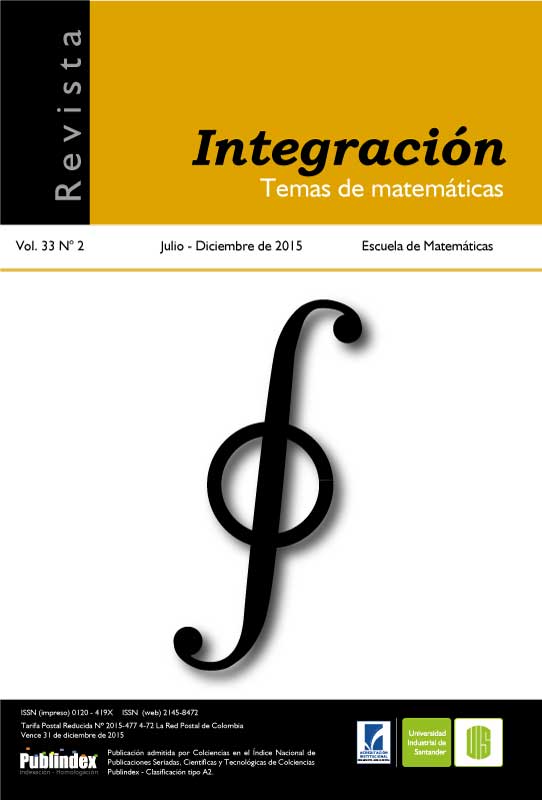Publicado 2015-12-04
Palabras clave
- Computabilidad y teoría de la recursión,
- topología algorítmica,
- variedades suaves.
Cómo citar
Resumen
Un logro notable de la topología algorítmica es el resultado de A.A. Márkov sobre la insolubilidad del problema del homeomorfismo para variedades. Posteriormente, Boone, Haken y Poénaru extendieron la idea original de Márkov al caso de variedades suaves cerradas. Una primera dificultad era la introducción de una representación finita de una variedad diferenciable o combinatórica que la describiese de forma natural. En este trabajo extendemos dicha representación a variedades suaves compactas y proponemos una definición de variedad suave representable.
Para citar este artículo: C.M Parra, J. Suárez Ramírez, Representación finita de variedades compactas, Rev. Integr. Temas Mat. 33 (2015), No. 2, 97–105.
Descargas
Referencias
- Aschenbrenner M., Friedl S. and Wilton H., “Decision problems for 3-manifolds and their fundamental groups”, Department of Mathematics, UCLA. http://www.math.ucla.edu/~matthias/publications.html [citado 11 de agosto de 2015].
- Bessières L., Besson G., Maillot S., Boileau M. and Porti J., Geometrisation of 3-manifolds, EMS Tracts in Mathematics, 13, European Mathematical Society (EMS), Zürich, 2010.
- Boone W.W., Haken W. and Poénaru V., “On recursively unsolvable problems in topology and their classification”, in Contributions to Math. Logic (Colloquium, Hannover, 1966) (ed. Schmidt H.A. et al.), North-Holland (1968), 37–74.
- Bryant J.L., “Piecewise linear topology”, in Handbook of Geometric Topology (ed. Daverman R.J. and Sher R.B.), North-Holland (2002), 219–259.
- Cairns S.S., “Triangulation of the manifold of class one”, Bull. Amer. Math. Soc. 41 (1935), No. 8, 549–552.
- Cairns S.S., “A simple triangulation method for smooth manifolds”, Bull. Amer. Math. Soc. 67 (1961), No. 4, 389–390.
- Chernavsky A.V. and Leksine V.P., “Unrecognizability of manifolds”, Ann. Pure Appl. Logic. 141 (2006), No. 3, 325–335.
- Markov A.A., “Insolubility of the problem of homeomorphy” (Russian), in Proc. Internat. Congress Math. 1958 (ed. Todd J.A.), Cambridge Univ. Press, New York (1960), 300–306.
- Milnor J.W., “On the relationship between differentiable manifolds and combinatorial manifolds” (unpublished notes), Princeton University (1956). Department of Mathematics,
- Texas Christian University. http://faculty.tcu.edu/gfriedman/notes/milnor3.pdf
- [citado 11 de agosto de 2015].
- Munkres J.R., Elementary Differential Topology, Princeton University Press, Princeton, NJ, 1966.
- Nabutovsky A., “Einstein structures: Existence versus uniqueness”, Geom. Funct. Anal. 5 (1995), No. 1, 76–91.
- Nabutovsky A. and Weinberger S., “Algorithmic unsolvability of the triviality problem for multidimensional knots”, Comment. Math. Helv. 71 (1996), No. 1, 426–434.
- Nash J., “Real algebraic manifolds”, Ann. of Math. (2) 56 (1952), No. 3, 405–421.
- Soare R.I., “Computability theory and differential geometry”, Bull. Symbolic Logic. 10 (2004), No. 4, 457–486.
- Whitehead J.H.C., “On C1-Complexes”, Ann. of Math. (2) 41 (1940), No. 4, 809–824.
